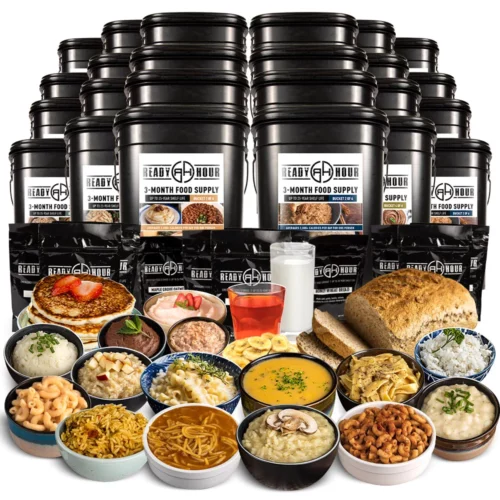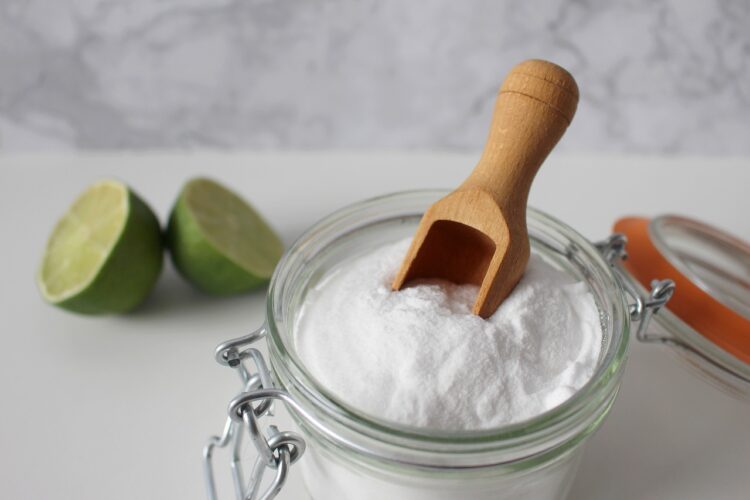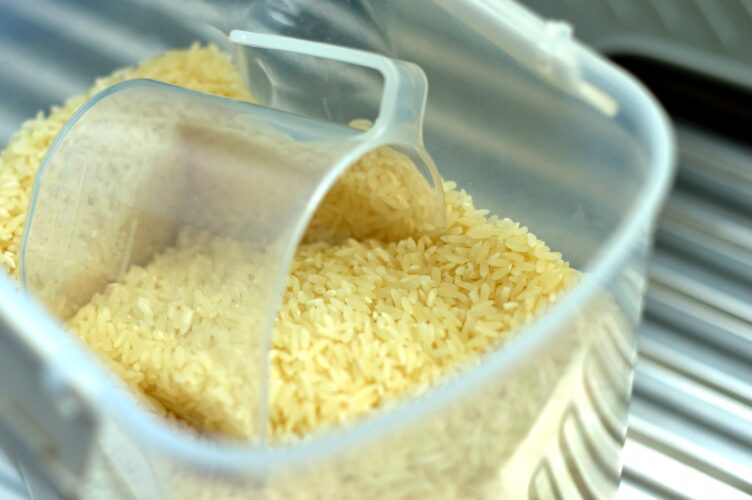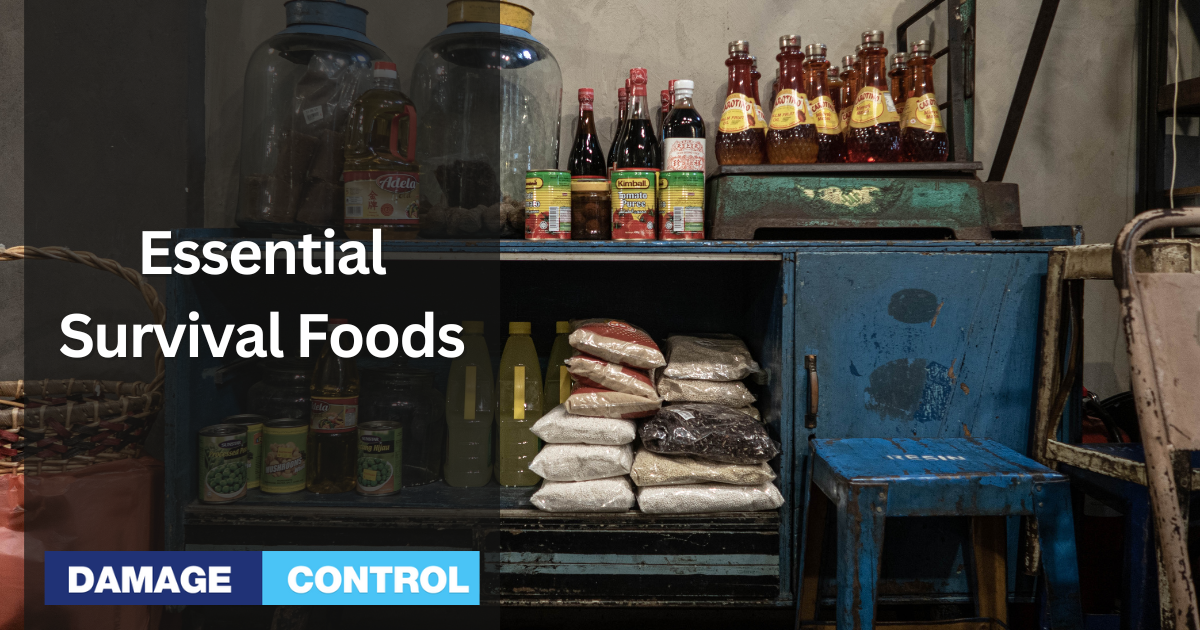When the unexpected strikes, it pays to be prepared. Enter: survival foods. These are more than just items in your pantry. They are your lifeline in an emergency. Nutritious, long-lasting, and easy to prepare, survival foods are crucial for enduring natural disasters, power outages, or extended periods of isolation. In this guide, we will dive deep into essential survival foods, offering clarity on what to store and why.
What Should Top Your List of Survival Foods?
First and foremost, protein is king. Without protein, our bodies can’t repair cells or build new ones. Key protein sources include:
- Canned meats (chicken, tuna, salmon)
- Peanut butter
- Nuts and seeds
- Lentils and beans
Next up, grains and carbs. They are your body’s primary source of energy. Important options are:
Rice
Pasta
Rolled oats
Quinoa
Don’t forget vitamins and minerals. Canned and freeze-dried fruits and vegetables retain nutrients and have lengthy shelf lives. They are indispensable.

Why Are Long Shelf Lives a Priority?
In survival situations, longer is definitely better. Typically, canned goods can last two to five years, sometimes even more. Freeze-dried foods? Up to 25 years. Wow. That’s a whole generation of security in a package. Always check expiration dates and rotate your stock, keeping the oldest products at the front.
How Can You Ensure Nutritional Balance?
In a survival scenario, maintaining nutritional balance is paramount. Your body needs a range of nutrients to function optimally, especially when stress levels are high. So, how can you achieve this balance with your stockpile of survival foods? Here’s a closer look:
1. Proteins: Essential for Growth and Repair
- Include plant-based options like lentils, beans, and nuts, as well as canned meats like chicken or tuna.
- Don’t forget about protein-rich grains like quinoa.
2. Carbohydrates: Your Main Energy Source
- Store whole grains such as brown rice, quinoa, and oats. These options are not only energy-rich but also provide essential fiber.
- Keep simple carbs like crackers or granola for quick energy boosts.
3. Fats: Necessary for Brain Function and Energy
- Stock up on healthy fats, such as nuts, seeds, and oils (olive oil, coconut oil).
- Remember that some canned fish, like salmon and sardines, are also excellent sources of healthy fats.
4. Vitamins and Minerals: For Overall Health
- Prioritize canned or freeze-dried fruits and vegetables. They retain most of their nutrients and are a simple way to boost your vitamin intake.
- Consider a multi-vitamin supplement as a backup.
5. Hydration: Often Overlooked, Always Essential
- Store enough water — a minimum of one gallon per person per day for at least three days.
- Include options like powdered electrolyte supplements to help in cases of severe dehydration.
6. Plan Your Meals
- Think ahead and plan simple, balanced meals using the foods in your stockpile.
- Aim for a plate that is half vegetables and fruits, a quarter protein, and a quarter grains.
7. Rotate and Review
- Regularly rotate your food stock to ensure nothing goes to waste.
- Continuously review your stockpile to ensure that you have a balance of proteins, carbs, fats, and vitamins.
8. Special Considerations
- Remember infants, elderly family members, or those with specific dietary needs. Stock baby formula or low-sodium options as necessary.
- Account for food allergies and intolerances. Avoid stocking items that someone in your household cannot consume.
To illustrate, here is a simple, balanced survival meal example:
- Canned chicken (Protein)
- Brown rice (Carbohydrates)
- Green beans (Vitamins and Minerals)
- A handful of nuts (Healthy Fats)
Ensuring nutritional balance in your survival food stockpile is more than just a strategy; it's a commitment to your health and well-being in challenging times. With thoughtful selection and planning, your survival pantry can be a robust, nourishing, and balanced resource when you need it most. Take action now, and your future self will thank you.
Which Survival Foods Are the Most Versatile?
Versatility in survival foods isn't just a nice-to-have, it’s a game-changer. These multi-purpose gems not only nourish you but can serve various functions in a pinch, from medicinal uses to acting as fuel or hygiene products. Let's dive into some examples of these adaptable essentials:
Honey

A powerhouse in the survival world:
- Natural Sweetener: Adds flavor to other survival foods without relying on refined sugars.
- Medicinal Properties: Its antiseptic qualities can help treat wounds and burns.
- Preservation: Honey never spoils. Archaeologists have found pots of honey in ancient Egyptian tombs that are over 3,000 years old and still perfectly good to eat.
Coconut Oil

This tropical treasure is much more than a cooking ingredient:
- Cooking Fat: An excellent, stable cooking oil that won't spoil quickly.
- Skin Care: Great for moisturizing skin, which can be crucial in harsh conditions.
- Lamp Fuel: In dire circumstances, it can be used as a fuel for small oil lamps.
Vinegar

Acidity at its finest:
- Preservation: Use it to pickle vegetables, extending their shelf life significantly.
- Cleaning Agent: A powerful, natural cleaner for sanitizing surfaces.
- Health: Some people use vinegar to soothe sore throats and improve digestion.
Baking Soda

Not just for baking:
- Cooking: Acts as a leavening agent for making bread and other baked goods.
- Cleaning: Effective and natural cleaner for your living space.
- Personal Hygiene: Can be used as toothpaste or a deodorant in a pinch.
Rice

More than a side dish:
- Nutrition: A staple that provides a significant amount of your daily calories.
- Thickening Agent: Ground into powder, it can be used to thicken soups and stews.
- Desiccant: Keeps small spaces and containers dry by absorbing excess moisture.
Incorporating versatile foods into your survival pantry not only saves space but also opens a world of options. When choosing your survival foods, consider their additional potential uses. That way, you're not just storing food; you're equipping your survival toolkit with multipurpose assets that can be real lifesavers in various scenarios. Efficient, practical, and smart. That’s versatility in survival, redefined.
How Should You Store These Survival Foods?
Proper storage of your survival foods is the cornerstone of your preparedness plan. It’s not just about having the right foods, but ensuring they are in optimal condition when you need them. Below are some key considerations and steps to effectively store your essential survival foods:
1. Select the Right Location
- Choose a cool, dark, and dry place. Extreme temperatures and moisture can spoil your food faster.
- Basements, pantries, or a designated closet can work well.
2. Use Airtight Containers
- For grains, flours, and powdered items, airtight containers are vital.
- These can be glass jars, plastic containers with sealable lids, or metal tins.
3. Protect from Pests
- Store food in hard containers that pests can't easily penetrate, such as metal or thick plastic bins.
- Regularly check for signs of infestation.
4. Organize and Label
- Arrange items so the oldest are at the front and used first — this is known as First In, First Out (FIFO).
- Clearly label all items with their expiration dates.
5. Rotate Regularly
- Regularly go through your stock and use items that are nearing their expiration. Replace them with fresh supplies.
- This keeps your stockpile fresh and reduces waste.
6. Manage Temperature
- Aim to keep your storage area at a consistent temperature, ideally between 50 and 70°F (10 and 21°C).
- Avoid placing food storage near hot pipes, a furnace, or in direct sunlight.
7. Monitor Humidity Levels
- Keep the humidity level in your storage area below 15% if possible.
- Silica gel packets can help control moisture in individual packages.
8. Seal and Preserve
- For long-term storage, consider vacuum-sealing food items or using oxygen absorbers to prolong their shelf life.
9. Special Storage for Water
- Don’t forget about water storage. Use dedicated water jugs, and avoid using containers that previously held milk or juice.
10. Regular Checks and Maintenance
- Schedule regular intervals, perhaps every six months, to check your supplies. Look for signs of spoilage, pest infestation, or leaks.
11. Record Keeping
- Maintain a log or spreadsheet of your stored items, quantities, and expiration dates. This helps with planning and rotation.
To illustrate, here's an example of proper food storage:
- Brown rice (Carbohydrates): Stored in an airtight, sealable plastic container, labeled with the expiration date, and placed in a cool, dark pantry.
Proper storage isn't just a one-time task; it's an ongoing responsibility. A well-organized, well-maintained food storage system can mean the difference between having a reliable supply of nutritious, edible food when it’s needed most and discovering your lifeline has spoiled or been invaded by pests. Start today, and let your well-organized survival pantry be your peace of mind for the future.
Conclusion
Survival foods are your safety net when disaster strikes. Prioritize proteins, grains, and nutrient-rich fruits and vegetables with long shelf lives. Balance is essential—aim for a mix that covers all your nutritional bases. Opt for versatile items that can serve various purposes and don't forget to include foods that you enjoy. Lastly, proper storage extends the life of your survival stash, so keep it cool, dark, dry, and organized. In times of uncertainty, this knowledge is your greatest asset. Prepare today, and grant yourself peace of mind for tomorrow.

